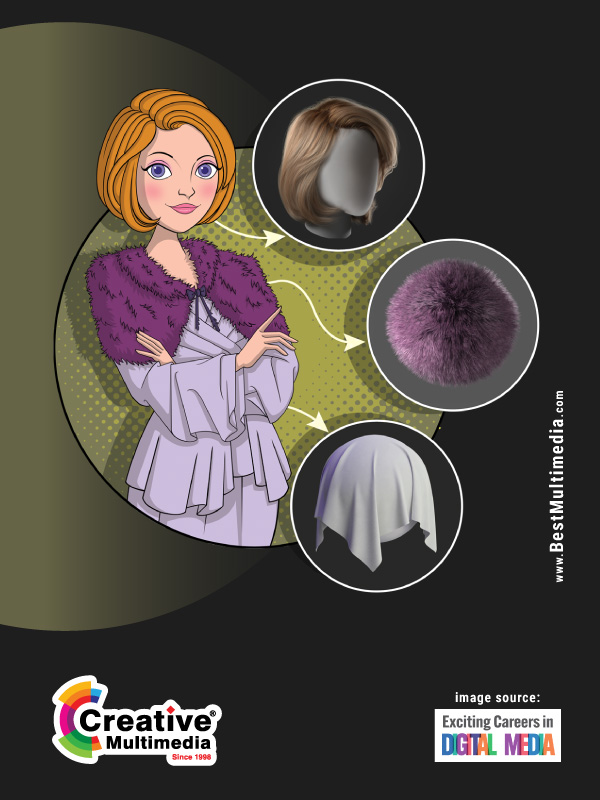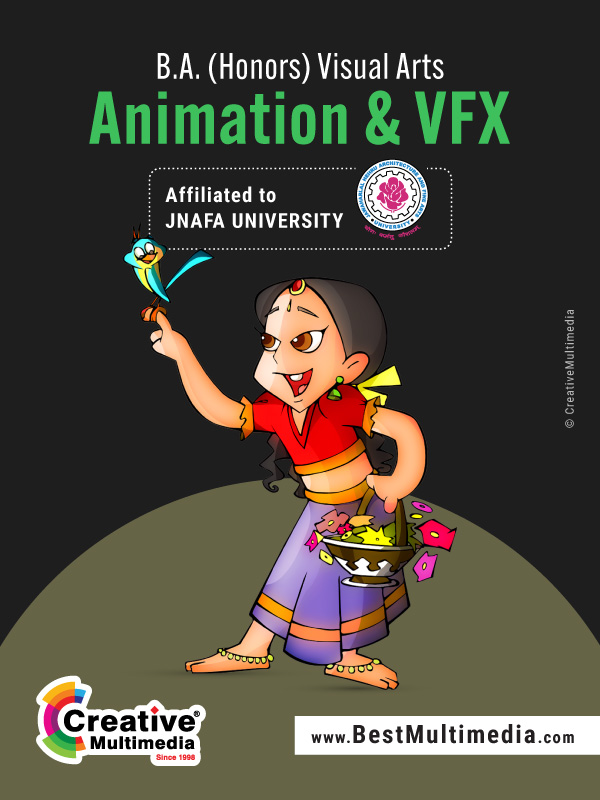What is Cloth, Hair, and Fur (CHF) Dynamics?
How to acquire CHF skills; what are the job landing strategies to successfully pursue VFX training and placements in India?
CHF Dynamics refers to the specialized art of simulating appendages like cloth, hair, fur, and feathers for characters and creatures in films, TV series, and advertisements. These appendages are created by CHF Artists. Collaborating with the technical director/CFX supervisor, CHF Artists comprehend project requirements, generate high-quality simulations, facilitate final animation for shot work, and contribute to the development of character FX tools to enhance the overall pipeline.

Key traits and skills to become CHF artist: Observation, attention to detail, and a pursuit of perfection; understanding of creature anatomy, behavior, and mechanics; proficiency in the physics of motion, timing, and the dynamics of cloth and hair; strong visual and artistic skills; familiarity with post-production pipelines and environments; organized, proactive, and self-driven; teamwork, communication, and problem-solving abilities; competence in production software; willingness to learn new skills and stay current with industry trends; and the ability to work under pressure and meet deadlines.
Skills Development: Prospective employers often prefer candidates with a degree in animation and VFX or a qualification in fine arts, or related fields. Ideal coursework should cover foundational skills like illustration and sculpture. Proficiency in essential software like SideFX Houdini and Autodesk Maya is crucial. Familiarity with specialized tools such as Peregrine Yeti, Epic Games Shave and Haircut, as well as cloth simulation software like Marvelous Designer and Qualoth, can enhance your candidacy. A background in programming is also beneficial.
Job Landing Strategies: A compelling demo reel showcasing your best work is essential to highlight your capabilities to potential employers. Ensure it includes enough variety to demonstrate the breadth of your skills. A graduate qualification in animation or a related field can significantly boost your employability.

Career Progression: The typical career path progresses from Junior CHF Animator to Senior CHF Animator, and Senior Character FX. Candidates passing out of the best VFX institutes in India are likely to have an edge over their peers in terms of growth.

Pay Scale Range (2022-23): Salaries for CHF Artists, depending on various factors, range from Rs. 1,80,000 to Rs. 3,60,000 per annum for freshers while for senior artists with over 5 years of experience, the salaries range from Rs. 7,20,000 to Rs. 12,00,000 per month.
